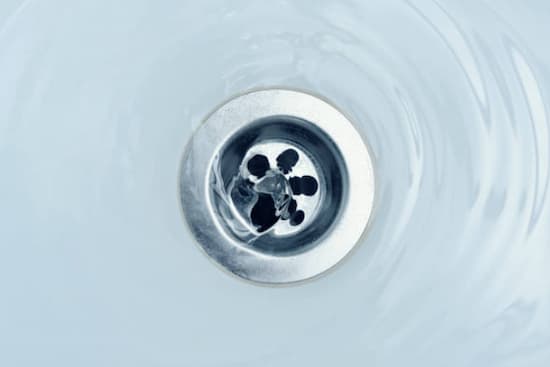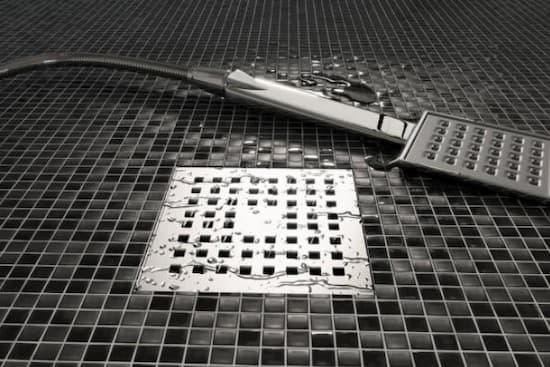The types of shower drain covers are probably something that you might not have thought of as you shop for fixtures and other essential items for your shower room area. Aside from covering the main drainage pipe underneath your feet, the drain cover serves an important purpose and provides a variety of functions depending on the type you have installed in your home.
This article will center on the bathroom drain types and their special functions. I’ll discuss each of them, and hopefully, it will help you find the best bathroom drain cap that suits your specific preferences. So without any further ado, let’s begin…

What is a Shower Drain?
A shower drain cover is basically the front end of the drainage system that filters hair and other debris from entering the pipes as you are taking a shower. It is an important piece in the shower room area because these residues accumulate over time, which could lead to blockage and slows the draining of water.
As mentioned, there are several types of shower drain covers as well. It might not mean that much to you, but each form provides various functions. Let’s proceed to the next section and learn more about drain covers and how they can help your bathroom drainage…
Different Types of Shower Drain Covers
In order to determine the types of shower drain covers that fit your needs, you have to put into consideration two factors, and that is the form of the drain cover and the installation method involved. Two factors will be discussed below to help you decide which one to purchase—
Styles & Designs
The first factor that you have to consider is the style and design of the drain cover. Aside from their apparent aesthetics, the form factor of the drain cover serves a unique purpose.
Linear Shower Drain
A linear or flat shower drain is a long rectangular cover in which each end is typically positioned from wall to wall. The length of the cover depends on the gap of each wall. It is also referred to as a drain grate shower because the design commonly has a flat-grilled design. You usually see these types of drain covers in public baths, such as in communal swimming pools.
This may be the case—it doesn’t mean that they’re an inappropriate fixture for a household. It does provide a lot of flexibility in regards to the amount of water it can handle. However, a problem with the linear shower drain is the level of maintenance that you have to put into the setup.
Pros:
- Ideal for larger homes or public spaces
- It is perpendicular to the floor, which renders it flat and comfortable to stand on
- Perfect match for big tiles
Cons:
- Due to their size, linear shower drains are expensive
Point Drain
A point drain is the most common one used in homes. It is a small and single-pipe shower drain channel that goes right through the sewage system. The shape, size, and materials used in the cover vary depending on your preferences. Some of the popular examples include a drain grate, plastic shower drain cover, round shower drain, etc.
Also, a point drain is slightly sloped in the direction of the drain cover straight to the pipe. As a result, it makes it easier to drain all of the water as you are taking your regular grooming regimen. Also, it is inexpensive and easy to install. However, the problem with these drain covers is that they are only suitable for smaller tiles.
Pros:
- Budget-friendly
- An ideal drain cover for homes
- It’s available in various shapes, such as rectangular or circular shower drain cover
Cons:
- It doesn’t work well with bathrooms with larger tiles
- It isn’t ideal for curbless showers
Hidden Drain
If you are not particularly a fan of the traditional shower drain covers and you want the floors to be more leveled, then you may opt for a hidden drain that has a specialized mechanism that conceals the cover from sight. Also, the hidden drain is relatively new in the market. It was introduced by Quick Drain USA in 2019. And as the name suggests, it is the ideal fixture for people who are conscious of the aesthetics of your shower room.
It doesn’t have any decorative metals, and it is meant to blend with the surrounding tiles. However, the problem with a hidden drain is that it can cost you huge sums of money due to its specialized and customized nature.
Pros:
- Aesthetically-pleasing
- Superior filtering system
Cons:
- It is an expensive installation
Installation Types
As mentioned in the earlier sections, aside from the design and style of the shower drain cover, you also have to decide on its installation type. Although it doesn’t have to do with style and aesthetics, such a feature helps you to put the drain cover in position and determines its stability.
Screw-On
As the name suggests, you basically install the drain cover by screwing them in place. We typically find them in homes and establishments because they are much more secure compared to other installations. However, the main issues with them are that they rust over time. It means that drains with screws need regular maintenance to prevent rust from developing.
Three-Piece
If you are the shower room is on the second floor, and the floorings are made of wood, then it is more appropriate to opt for a three-piece drain cover installation. And the reason behind this case is that they’re milder on wood, so to speak. Also, the design of the three-piece installation is specialized to impede the development of molds and fungi since the wood will be interacting with water most of the time.
Snap-In
You typically find snap-in being used in the plastic shower drain. And many are enamored in using them because they are very easy to install—you position them properly and gently push until it’s snap into place. Moreover, a snap-in is relatively cheap. Its huge disadvantage, however, is that most of them are plastic shower drains which imply that they break off easily.

Takeaway
If you are conscious of the fixtures and mechanisms working in your bathroom, then you may want to take into consideration every detail, no matter how seemingly insignificant they may be, such as the shower drains we’ve mentioned in this blog. Your choice depends on your personal preferences about types of drain covers. I believe that’s just about it! Thank you for taking time off in reading my article about the types of shower drain covers.
Frequently Asked Questions about the Types of Shower Drain Covers
Below are some of the common queries that many have in regards to the types of shower drain covers—
There are three main shower design types today, which include a linear shower drain, point drain, and hidden drain. You can choose one of them depending on your preference or needs.
Yes, the shower drain cover normally comes off. Some of them can be removed by removing the screws, while others you may just have to unsnap.
0 Comments for “The Basic Types of Shower Drain Covers”